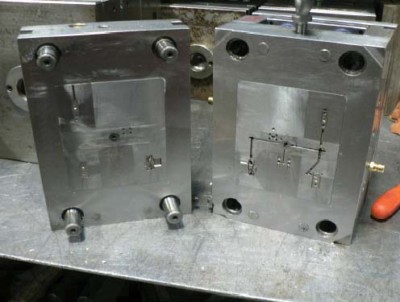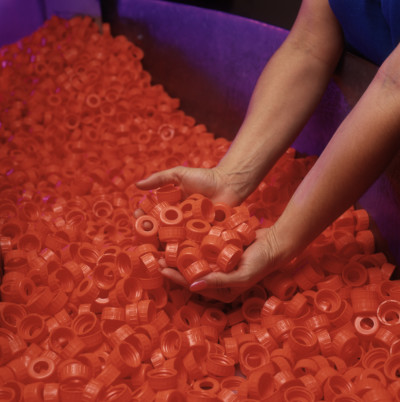The cost of injection molding depends on multiple factors, including part complexity, tooling, materials, labor, quantity, and production location. You can expect to spend $1,200 minimum on your mold. In addition to tooling costs, you will also pay for each unit produced. For very low volumes, you can expect to pay between $10-100 per part. High volumes can lower unit cost to less than $0.01.
Injection Molding Cost Factors
There are multiple factors that determine the cost of an injection molding project, and each should be examined when considering injection molding.
Domestic vs. Overseas
Where you do your injection molding will have the greatest impact on cost. While some people may have justifiable concerns over manufacturing in China, it is an order of magnitude more expensive to manufacture in the US. It costs more just to buy the steel for your tooling in the US than it does to do the entire project in China.
Tooling
 Injection mold tooling is machined from steel or aluminum and can take 6-8 weeks to produce. While some molds may be made from aluminum to save on expenses, this material is relatively weak and should only be used for low volume runs because it will deform after a few thousand mold cycles. For most molds, tool steel is used because it can produce parts for years without issue. Due to steel’s strength, it is more difficult to machine, making it more expensive.
Injection mold tooling is machined from steel or aluminum and can take 6-8 weeks to produce. While some molds may be made from aluminum to save on expenses, this material is relatively weak and should only be used for low volume runs because it will deform after a few thousand mold cycles. For most molds, tool steel is used because it can produce parts for years without issue. Due to steel’s strength, it is more difficult to machine, making it more expensive.
Mold cost will also depend on the mold’s tolerance and number of cavities. Molds with higher tolerances are more expensive due to the extra care and precision taken in machining them. A multi-cavity mold will boost the speed of your production, but machining this type of mold takes longer, making it more expensive than a single cavity mold.
In cases where 6-8 weeks is too long to wait on tooling, there is the option to use 3D printed tooling. 3D printing allows for a mold to be ready for use in as little as 48 hours. While this speed is certainly an advantage, this tooling is expensive and might even cost more than a traditional mold. Additionally, these plastic 3D printed molds can only produce roughly 100 parts before they begin to deform.
Part Complexity & Size
Parts with unconventional geometry, fine features, undercuts, or specific surface finishes are considered complex and demand equally complex molds to produce them. These molds are often quite challenging to manufacture and may need additional pieces, such as side actions or pick-outs, to work, making them more costly. Since pick-outs must be manually removed and reinserted into the mold cavity each cycle, your process will also slow down and need more labor than for a simple part. It is also worth noting that larger parts take more time for their molds to be manufactured and filled.
 Volume
Volume
Volume is another key factor in determining if injection molding will be beneficial to you. Due to the steep upfront tooling cost, injection molding really only becomes practical when you are planning to produce a part in a large volume. This is because injection molding follows the principle of economy of scale, meaning that the more parts you make, the less expensive each part becomes because you are spreading out the initial mold cost over more units.
Materials
Injection molding offers a wide variety of materials, and which one you choose may influence the overall cost of your project beyond the expense of the raw material. Materials that have a higher melting point than usual may require an injection molding machine with higher heating capabilities and a mold that can withstand extreme temperatures. Likewise, if a material is highly viscous, a stronger machine will be needed to ensure there is enough injection pressure to completely fill the mold and not create voids.
Molding
In addition to material choice, unit cost is also determined by the cycle time. An injection molding cycle includes injecting the molten plastic into the mold, allowing the part to cool, ejection, and closing the mold to prepare for the next cycle. This cycle becomes longer if pick-outs are being used. Additional time must be accounted for when molding large or thick parts as large molds take longer to fill and thick sections need longer to cool before ejection.
Post-Processing
Labor costs for post-processing must also be considered in production costs. Most parts will require trimming to remove the runner system. This can be done automatically during the ejection phase or manually in post-processing.
Injection Molding at 3 Space
Here at 3 Space, we offer a variety of manufacturing services, including injection molding and 3D printed tooling. If you have questions about the viability of 3D printed tooling for your project or our injection molding services, our expert engineers are here to help. For additional information, contact us today.
